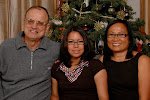Belize is a very culturally diverse country. The PG area is probably the most diverse of all. The town of PG itself has historically been a Garifuna settlement. This group of people settled Belize in the early 1800’s when they were evicted by the British from St. Vincent Island in the Caribbean. They are a mix of the runaway slaves and the Carib Indians. The Eldridge area and several villages along the main road heading north are populated by the descendants of East India. They originally came as laborers in the banana, timber, and sugar plantations, mainly to the American plantation owner who eventually left after about 3 generations. Now they own and farm their own land. In the outlying villages are two groups of Mayan, Ketchi and Mopan, each with their own language and cultural beliefs. Mixed with these are a few Mennonite farmers, Chinese businessmen, Creole (mix of former slave and slave owner), Mestizos (mix of Spanish and native Central Americans), and expatriate American and Europeans.

Mayan kids at school fair.

Garifuna dance presentation.

Alan, our night security, with daughter - East Indian descent.
 Doing the limbo.
Doing the limbo.













